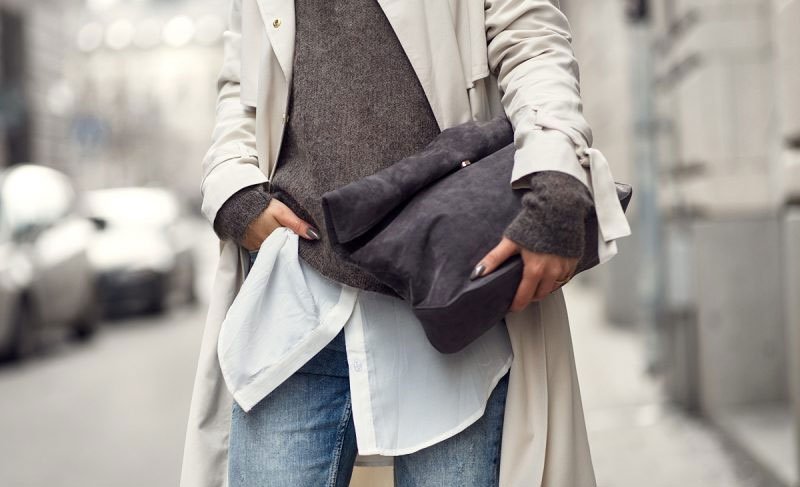Sustainable Fashion: Trends and Practices for a Greener Future
The fashion industry is one of the most polluting industries in the world. With fast fashion brands churning out new collections every few weeks, the environmental impact of the industry has reached alarming levels. However, in recent years, there has been a rising consciousness amongst both consumers and fashion brands to adopt more sustainable and ethical practices. Sustainable fashion aims to reduce the harmful impact of fashion production and consumption on the environment and society. In this blog post, we will discuss the latest trends, tips and the role of consumers in promoting a greener future for fashion.
Understanding Sustainable Fashion
Sustainable fashion refers to clothes that are manufactured, marketed and used in the most sustainable manner possible, taking into account both environmental and socio-economic aspects. It emphasizes circular production and consumption, fair labor practices, use of eco-friendly materials, and efficient disposal of clothing and accessories. The goal is to create garments that are long-lasting and cause minimal harm to the environment or society.
With the fashion industry being the second largest polluter after oil, adopting sustainable practices is the need of the hour. Some alarming facts that highlight the detrimental environmental impact of fast fashion are:
- Textile production emits 1.2 billion tonnes of greenhouse gases annually – more than aviation and shipping combined. Dyeing and treatment of fabrics constitute the most pollution.
- Every second, the equivalent of one garbage truck of textiles is burned or landfilled. Less than 1% of materials used to produce clothing is recycled into new clothing.
- It takes around 2,000 gallons of water to produce one pair of jeans. The fashion industry accounts for 10% of global carbon emissions.
By switching to sustainable materials, using recycling and upcycling, ensuring fair wages and healthy working conditions, the fashion industry can bring about substantial change. Sustainable fashion protects the environment, empowers workers, and conserves resources for future generations.
Latest Trends in Sustainable Fashion
The awareness around sustainability has opened up innovations in eco-friendly materials and production methods. Here are some of the leading trends in sustainable fashion:
Upcycling
Upcycling involves converting old, discarded materials into something of better quality and environmental value. For example, using old saris to create dresses or turning leftover fabric cuttings into accessories. Not only does this reduce textile waste, but the end products are also unique. An emerging trend is upcycled clothing lines by luxury brands like Hermes and Louis Vuitton.
Recycled Materials
Using recycled materials like PET bottles, recycled cotton, wood pulp, and recycled polyester decreases the environmental impact of fashion production. Brands like Rothy’s are creating shoes out of single-use plastic water bottles. Eileen Fisher uses recycled wool and down to reduce energy consumption.
Natural and Biodegradable Materials
Sustainable fabrics include organic cotton, linen, hemp, lyocell, and wool. These are grown and processed sustainably using less water and pesticides. Another innovation is the use of biodegradable materials like Piñatex (pineapple leather), orange fiber (citrus waste), and Mylo (mycelium). These can fully decompose at the end of their lifecycle.
Circularity
Circular systems employ recycling, reuse and reduction of waste. ‘Made to order’ or ‘Zero inventory’ production, and innovations like Lease A Garment allow clothing to be reused many times. Brands like Patagonia are actively working on recycling programs to reclaim used clothing and keep materials in use.
Fair Trade and Labor Practices
Sustainable fashion promotes safe working conditions, reasonable working hours, and fair wages across the supply chain from farmers to factory workers. Consumers should check for certifications from Fair Trade, GOTS (Global Organic Textile Standard), OCS (Organic Content Standard) etc.
Practical Tips for Consumers
As consumers become more aware, the demand for ethical and eco-friendly fashion continues to grow. Here are some tips that you can follow to become a sustainable fashion consumer:
- Invest in quality, versatile and durable items that will last years rather than months. Opt for natural, organic fibers that are safer for your skin and the environment.
- Shop vintage and second-hand clothing to offset demand for new clothing and textiles. You can find real treasures in charity shops and thrift stores.
- Look for labels like Fair Trade, GOTS, OCS, BCI (Better Cotton Initiative), RCS (Recycled Claim Standard) etc. before purchasing items. This ensures ethical production.
- Instead of discarding old clothes, try repairing, reusing, or upcycling them. Swap clothes with friends or donate what you no longer need.
- Wash clothes less frequently, at lower temperatures, and air dry instead of machine drying to increase their lifespan.
- Choose brands that collect and recycle used garments. Adidas x Parley shoes are made from recycled ocean plastic. Patagonia offers repairs and takes back used clothes.
- Avoid purchasing fast fashion from large chains that promote overconsumption. Opt for eco-conscious brands that value sustainability.
- Spread awareness in your community by talking about sustainability and supporting local ethical brands. Every action counts!
The Role of Consumers in Promoting Sustainable Fashion
While sustainable brands are bringing promising changes, as customers we also have to play an active role in steering the industry in a greener direction through our purchases. Here is how our shopping habits and lifestyle can promote ethical fashion:
- Conscious consumption: We have to move away from overconsumption and impulsive shopping. Consider if you really need an item, buy only good quality clothing, and choose sustainable brands.
- Active voice: Provide feedback to brands about their sustainability initiatives. Write reviews, emails and social media posts to applaud or critique their practices.
- Mindful care: Handle clothes with care and repair or repurpose them to prolong their lifespan. Dispose of clothes responsibly or donate them for reuse.
- Creative upcycling: Try DIY projects to upcycle old fabrics and clothing at home into new pieces. Host a clothing swap party with friends.
- Education and awareness: Have conversations with family and friends about making ethical purchases. Share relevant articles and videos to spread the word.
- Supporting local businesses: From small sustainable startups to eco-fashion boutiques, local businesses need our support to thrive. Prefer them over international brands.
With mindful consumption, activism and innovation, we can nurture the sustainable fashion revolution. We have to alter our shopping habits and change the future of fashion, one ethically produced garment at a time.
Conclusion
The fashion industry is gradually waking up to its enormous social and environmental footprint. Sustainable fashion offers concrete solutions to combat the issues of pollution, waste, and unethical practices plaguing the sector. As conscious consumers, we have to support brands that embrace circularity, ethical manufacturing, and sustainability in their business models. We must also make careful purchases, reduce consumption, reuse and recycle garments.
With concerted efforts from all stakeholders: designers, brands, retailers, and customers – we can transition to a cleaner and fairer fashion system. Sustainable fashion allows us to curb excesses, reuse resources, and preserve the planet for the future. The time to be more mindful of how we produce, consume and dispose of garments is now. Let us all strive to make the fashion industry cleaner, greener and more ethical.






